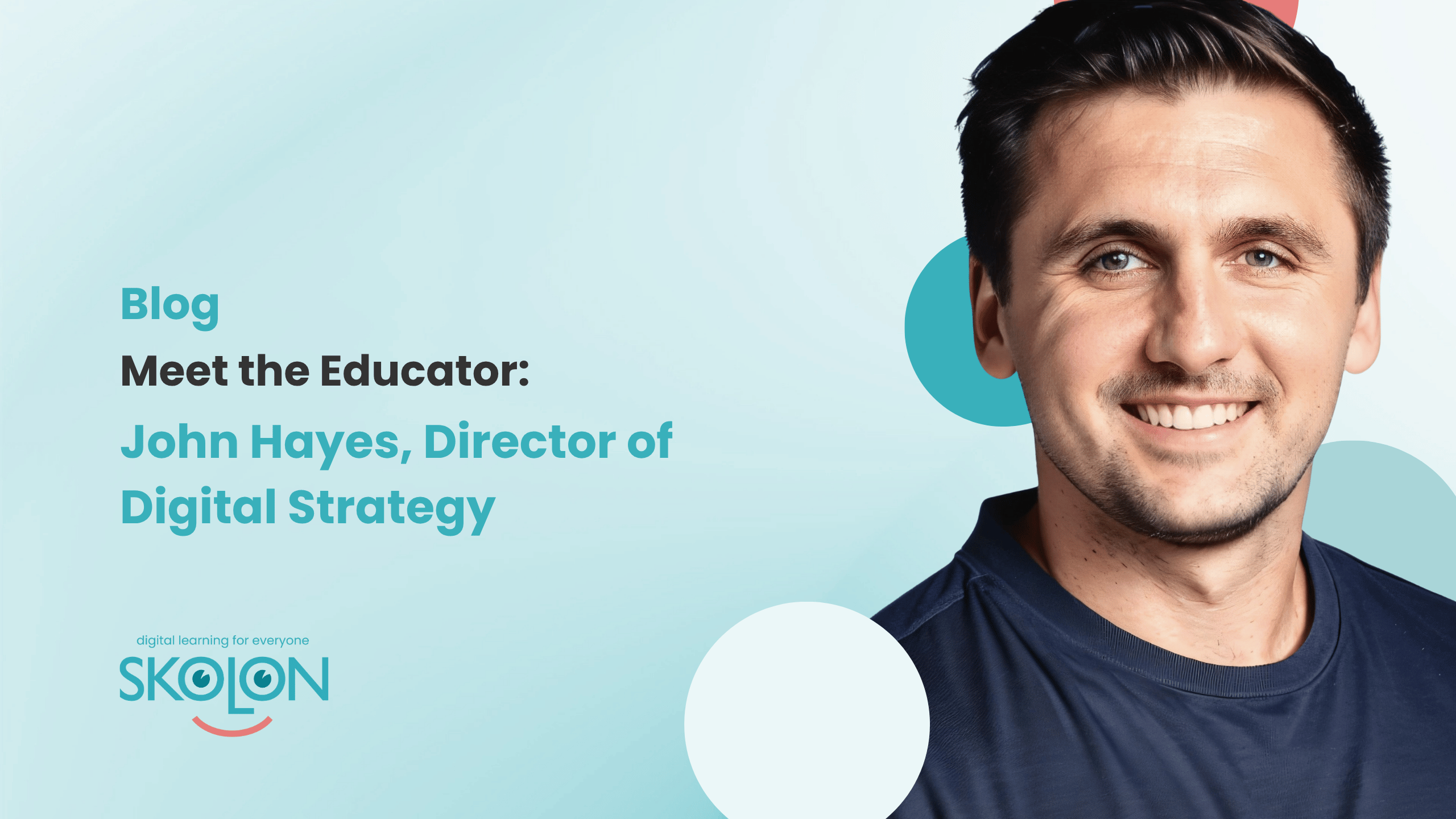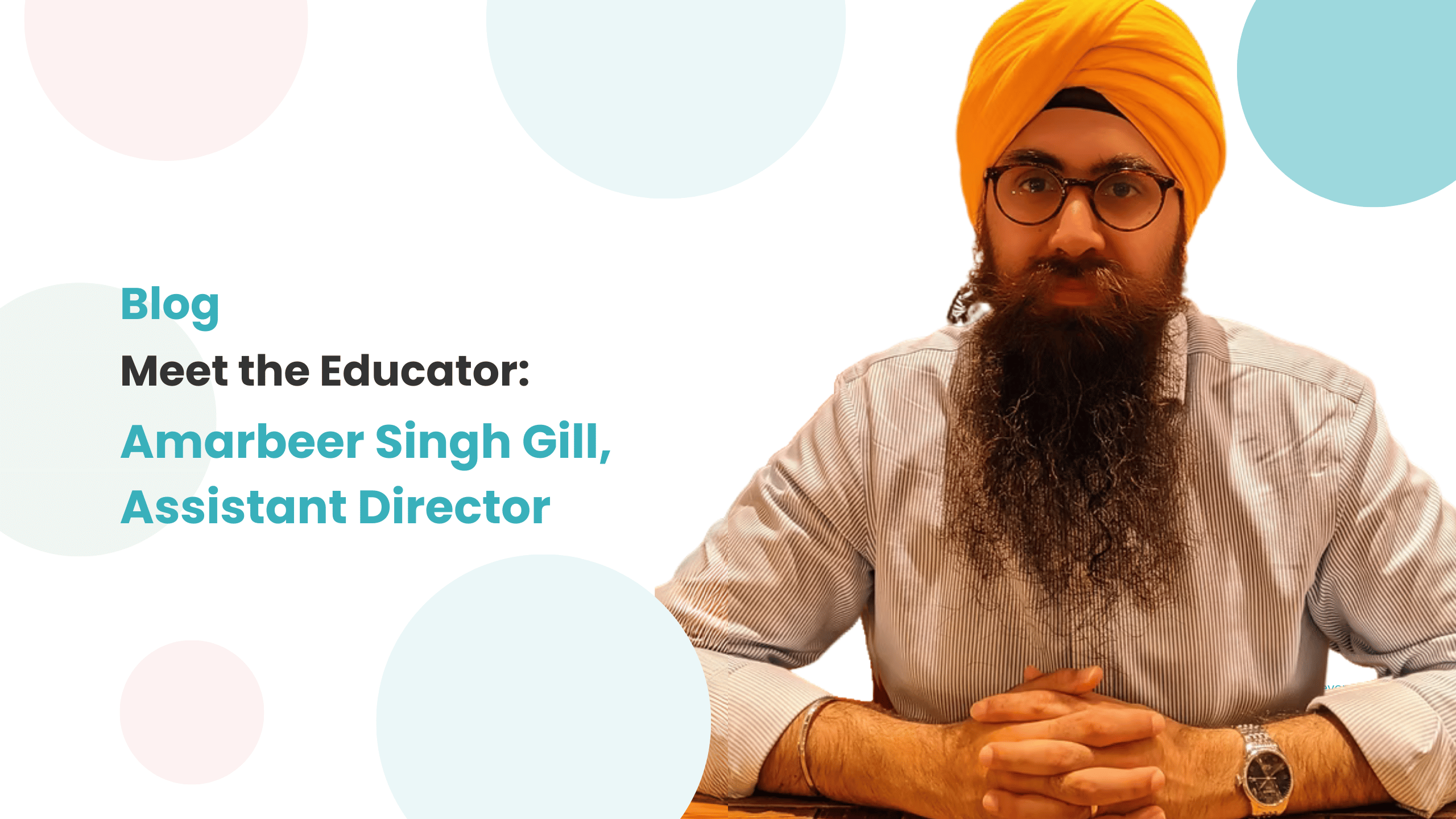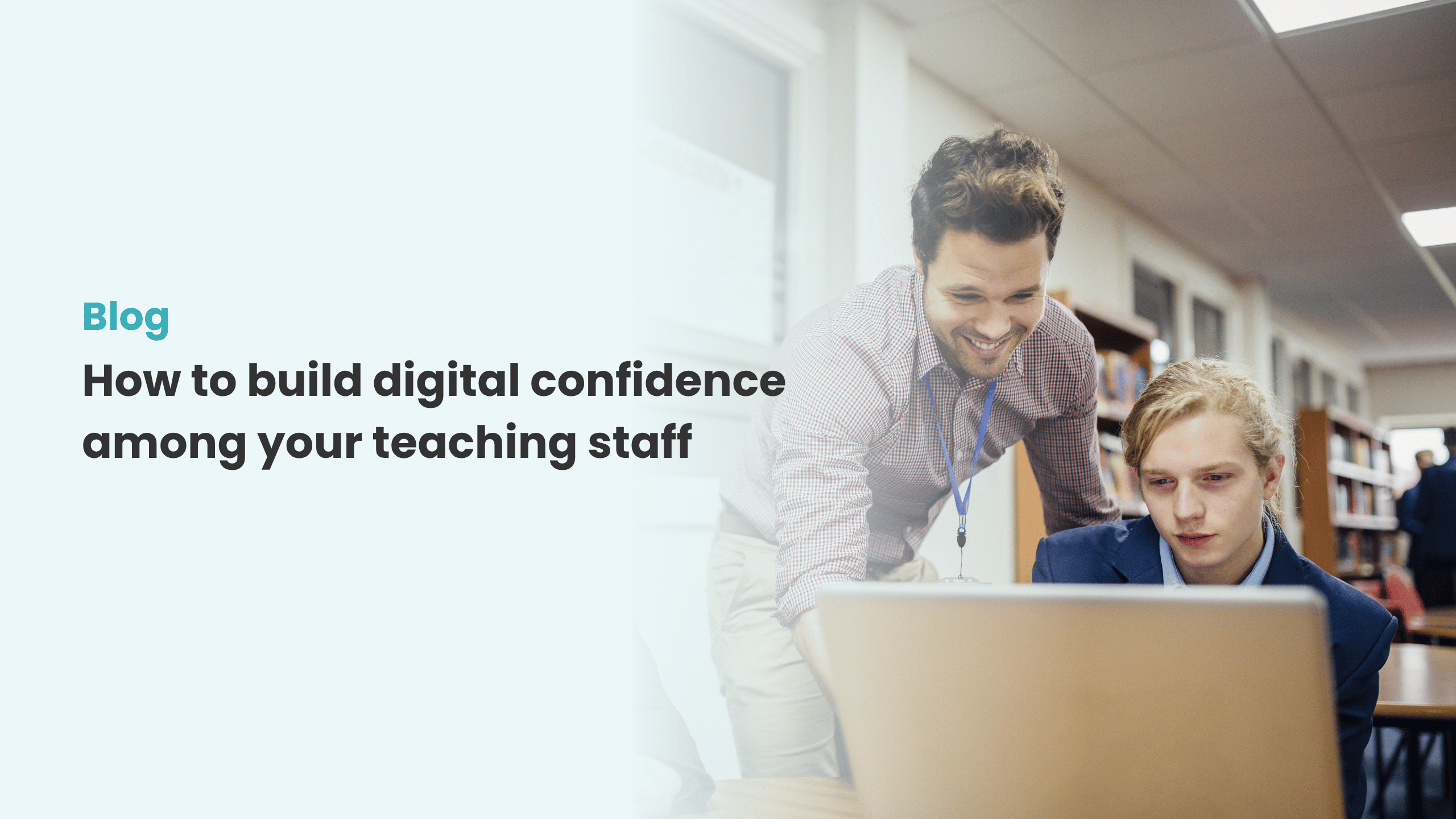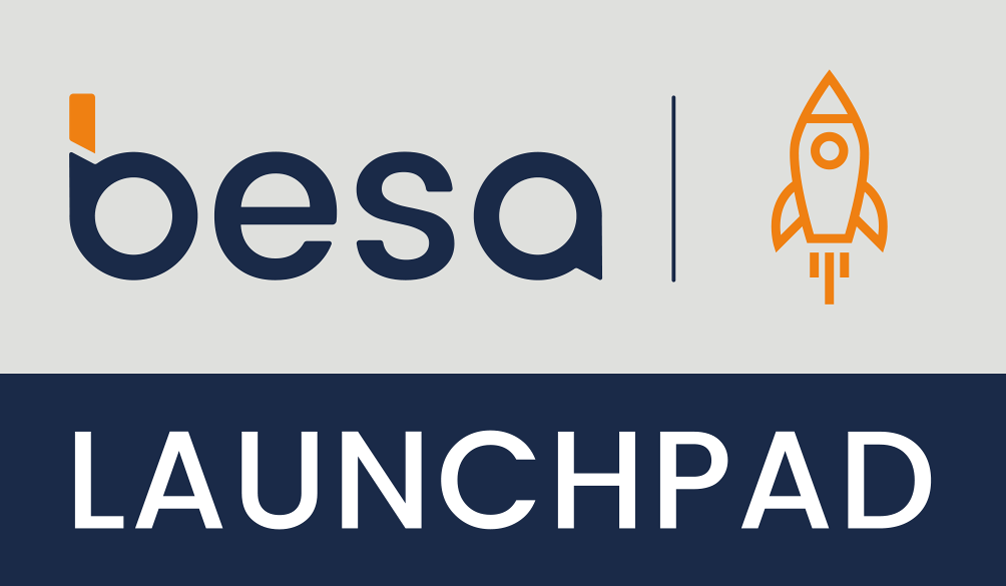Meet the Educator: John Hayes


John Hayes: Paving the Way for Digital Transformation in Education
Welcome back to Meet the Educator — our monthly spotlight series where we share the real stories, insights, and everyday brilliance of educators across the country.
In this third edition, we’re excited to introduce you to John Hayes, Director of Digital Strategy at Greenwood Academies Trust, who’s passionate about using technology to transform education.
From classroom challenges to tech triumphs, each of our featured educators brings a unique voice to the evolving world of teaching — and John Hayes is no exception.
Let’s dive in.
From P.E to PCs
With a unique journey into the world of edtech, John started as a Head of Year and PE teacher in January 2017, where he found himself intrigued by Greenwood’s forward-thinking migration to cloud technology. This initial interest, coupled with his ambition to move into a Senior Leadership Team (SLT) role, led him to take on an IT Coordinator position, even without a full understanding of its scope.
This pivot proved pivotal, as he was introduced to the Microsoft Innovative Educator Expert community, igniting a passion for technology, with John stating: “It just seemed a bit of an untapped market – no one was really talking about it or using technology in any great shape or form. I could see its power and I wanted to explore it.”
Hayes dedicated his evenings to self-training, becoming particularly engrossed in Microsoft’s Power Automate. His persistence led to a breakthrough: he convinced his academy’s SLT to implement a Power Automate solution for leave of absence requests, eliminating paper forms and enabling better data analysis.
This automated system, which still handles an average of 2,500 requests annually, was a “game changer,” saving immense time and resources that were previously spent on manual processing, archiving, and re-filling forms. The environmental benefit was also significant, eliminating the need for vast quantities of paper, which one year cost the academy £26,000.
His dedication caught the eye of Graham Feek, the Deputy CEO, which marked the true beginning of his current role, with his teaching hours gradually reduced to allow him to focus entirely on digital strategy. During our chat, John admitted that his path to Director of Digital Strategy was unexpected, but he embraced opportunities, which ultimately “paid off”. Reflectively, he spoke about how his upbringing had a positive impact in this journey:
“I was always brought up to take as many opportunities as you can because you never know what you’re going to and not going to like”

A day in the life: Flexibility and foundations
As Director of Digital Strategy, Hayes thought a non-teaching timetable would bring routine, but he quickly discovered that his days are “pretty fair game for anything to happen” after the morning school run. He enjoys the problem-solving aspect of his role, dropping tasks to “figure out the answer” to a colleague’s question or address unexpected issues, such as adding users to a security group for a new app launch.
Laying the foundations: GAT’s digital transformation
Greenwood Academies Trust‘s significant digital transformation programme was designed after their previous cloud migration project had been completed, however, it wasn’t driving them forward. John’s primary focus for the current year has been on “foundations”. He stresses that without a robust base, digital technology is vulnerable to failure, hacking, and various other issues.
This foundational work has involved three major projects:
New MIS procurement and deployment: Within six months, they procured, deployed, and trained all staff on a new Management Information System (MIS), a solution that will serve the Trust for the next five years.
Windows 11 rollout: Proactively addressing the shift to Windows 11, ensuring a secure operating system for teaching and learning, and managing device compatibility across the Trust.
SDWAN network implementation: Transitioning to a new SDWAN network to ensure reliable connectivity, which is crucial for any digital learning strategy.
Underpinning these initiatives is a continuous focus on cyber security, working closely with their Security Operations Centre (SOC) to maintain a “very good” security score and identify further opportunities.
With these foundational elements nearing completion by the end of summer, John anticipates that the education team will be empowered to “push out a strategy in terms of digital learning, teaching and learning as they see fit,” knowing the infrastructure is secure and functional. Another key outcome of this foundational work has been the realisation of the sheer volume of disparate software licenses across the Trust – over 400 unique licenses.
As such, John’s team has begun the process of aligning this software to improve economic efficiency and cyber security, guiding academies to make “the right choice” in their software deployments.
The future of education: navigating the AI frontier
John is simultaneously most excited and most cautious about Artificial Intelligence (AI) for the future of MATs. He quotes Chris Huntingford, stressing the imperative to “get on board with AI whilst AI is happening before AI happens to us.”, while acknowledging that AI is already in use by both students and staff and will inevitably transform the education system.
Exploring the topic of AI further, John sees its immense potential.
“We already know staff are using it; we know it’s going to reduce workload and improve access to education for SEND and EAL. It’s a game changer.”

Full steam ahead?
When deciding to pilot new technology, Hayes’ experience dictates that success comes from building solutions on a small scale and demonstrating their benefits first.
“I’m an advocate for the osmosis effect, which is where academies voluntarily adopt solutions once their advantages are clearly seen, rather than a top-down mandate.” – An approach that was successfully used for Greenwood’s data work.
John’s words of wisdom for educators and trust leaders
Drawing on his extensive experience, John Hayes offers several key pieces of advice for other educators and trust leaders aiming to maximise technology’s potential in their schools:
Foster collaboration and openness: Hayes champions an “open trust” model—sharing in-house solutions and learning from educator communities (like the Microsoft Educator Community)—emphasising mutual support in a fast-changing field.
Adopt an “Osmosis Effect” for implementation: Hayes favours small-scale solutions that spread by proven success, allowing schools to opt in rather than forcing change—an “osmosis effect” that builds genuine buy-in.
Recognise when technology isn’t the answer: Technology is powerful, but not always the simplest solution—sometimes the old way works better. Still, exploring tech options should always be part of the conversation.
The magic wand problem: funding
As we near the end of the interview, I ask John the question I ask every educator I speak with to find whether the wants and needs of educators differ from schools and trusts across the country.
If John Hayes could wave a magic wand to solve one problem in education, it would undoubtedly be the lack of real funding.
“Behind the scenes, you see a system that’s just about ticking along, with schools and teachers asked to do more with less—maintaining standards, supporting students through tough home lives, and preparing them for a fast-moving, tech-driven world.
“But modern education requires more than goodwill; it needs real investment in infrastructure like hardware, cybersecurity, and networking. These aren’t luxuries—they’re essentials. If we want education to truly meet the demands of the 21st century, we need a serious, honest look at what it actually costs to deliver that—and commit to funding it properly.”
—
John Hayes’ journey from PE teacher to a pioneering digital strategist exemplifies the potential for individuals to drive significant change in education. His practical, measured, yet ambitious approach to leveraging technology, coupled with his deep understanding of the challenges facing schools, offers invaluable insights for leaders navigating the digital transformation of education in the UK.
If you know of any inspiring educators like John, please get in touch—we’d love to feature them in our series!
Information
Share this story
Subscribe
Would you like our newest articles delivered to your inbox? Sign up now!
John Hayes: Paving the Way for Digital Transformation in Education
Welcome back to Meet the Educator — our monthly spotlight series where we share the real stories, insights, and everyday brilliance of educators across the country.
In this third edition, we’re excited to introduce you to John Hayes, Director of Digital Strategy at Greenwood Academies Trust, who’s passionate about using technology to transform education.
From classroom challenges to tech triumphs, each of our featured educators brings a unique voice to the evolving world of teaching — and John Hayes is no exception.
Let’s dive in.
From P.E to PCs
With a unique journey into the world of edtech, John started as a Head of Year and PE teacher in January 2017, where he found himself intrigued by Greenwood’s forward-thinking migration to cloud technology. This initial interest, coupled with his ambition to move into a Senior Leadership Team (SLT) role, led him to take on an IT Coordinator position, even without a full understanding of its scope.
This pivot proved pivotal, as he was introduced to the Microsoft Innovative Educator Expert community, igniting a passion for technology, with John stating: “It just seemed a bit of an untapped market – no one was really talking about it or using technology in any great shape or form. I could see its power and I wanted to explore it.”
Hayes dedicated his evenings to self-training, becoming particularly engrossed in Microsoft’s Power Automate. His persistence led to a breakthrough: he convinced his academy’s SLT to implement a Power Automate solution for leave of absence requests, eliminating paper forms and enabling better data analysis.
This automated system, which still handles an average of 2,500 requests annually, was a “game changer,” saving immense time and resources that were previously spent on manual processing, archiving, and re-filling forms. The environmental benefit was also significant, eliminating the need for vast quantities of paper, which one year cost the academy £26,000.
His dedication caught the eye of Graham Feek, the Deputy CEO, which marked the true beginning of his current role, with his teaching hours gradually reduced to allow him to focus entirely on digital strategy. During our chat, John admitted that his path to Director of Digital Strategy was unexpected, but he embraced opportunities, which ultimately “paid off”. Reflectively, he spoke about how his upbringing had a positive impact in this journey:
“I was always brought up to take as many opportunities as you can because you never know what you’re going to and not going to like”

A day in the life: Flexibility and foundations
As Director of Digital Strategy, Hayes thought a non-teaching timetable would bring routine, but he quickly discovered that his days are “pretty fair game for anything to happen” after the morning school run. He enjoys the problem-solving aspect of his role, dropping tasks to “figure out the answer” to a colleague’s question or address unexpected issues, such as adding users to a security group for a new app launch.
Laying the foundations: GAT’s digital transformation
Greenwood Academies Trust‘s significant digital transformation programme was designed after their previous cloud migration project had been completed, however, it wasn’t driving them forward. John’s primary focus for the current year has been on “foundations”. He stresses that without a robust base, digital technology is vulnerable to failure, hacking, and various other issues.
This foundational work has involved three major projects:
New MIS procurement and deployment: Within six months, they procured, deployed, and trained all staff on a new Management Information System (MIS), a solution that will serve the Trust for the next five years.
Windows 11 rollout: Proactively addressing the shift to Windows 11, ensuring a secure operating system for teaching and learning, and managing device compatibility across the Trust.
SDWAN network implementation: Transitioning to a new SDWAN network to ensure reliable connectivity, which is crucial for any digital learning strategy.
Underpinning these initiatives is a continuous focus on cyber security, working closely with their Security Operations Centre (SOC) to maintain a “very good” security score and identify further opportunities.
With these foundational elements nearing completion by the end of summer, John anticipates that the education team will be empowered to “push out a strategy in terms of digital learning, teaching and learning as they see fit,” knowing the infrastructure is secure and functional. Another key outcome of this foundational work has been the realisation of the sheer volume of disparate software licenses across the Trust – over 400 unique licenses.
As such, John’s team has begun the process of aligning this software to improve economic efficiency and cyber security, guiding academies to make “the right choice” in their software deployments.
The future of education: navigating the AI frontier
John is simultaneously most excited and most cautious about Artificial Intelligence (AI) for the future of MATs. He quotes Chris Huntingford, stressing the imperative to “get on board with AI whilst AI is happening before AI happens to us.”, while acknowledging that AI is already in use by both students and staff and will inevitably transform the education system.
Exploring the topic of AI further, John sees its immense potential.
“We already know staff are using it; we know it’s going to reduce workload and improve access to education for SEND and EAL. It’s a game changer.”

Full steam ahead?
When deciding to pilot new technology, Hayes’ experience dictates that success comes from building solutions on a small scale and demonstrating their benefits first.
“I’m an advocate for the osmosis effect, which is where academies voluntarily adopt solutions once their advantages are clearly seen, rather than a top-down mandate.” – An approach that was successfully used for Greenwood’s data work.
John’s words of wisdom for educators and trust leaders
Drawing on his extensive experience, John Hayes offers several key pieces of advice for other educators and trust leaders aiming to maximise technology’s potential in their schools:
Foster collaboration and openness: Hayes champions an “open trust” model—sharing in-house solutions and learning from educator communities (like the Microsoft Educator Community)—emphasising mutual support in a fast-changing field.
Adopt an “Osmosis Effect” for implementation: Hayes favours small-scale solutions that spread by proven success, allowing schools to opt in rather than forcing change—an “osmosis effect” that builds genuine buy-in.
Recognise when technology isn’t the answer: Technology is powerful, but not always the simplest solution—sometimes the old way works better. Still, exploring tech options should always be part of the conversation.
The magic wand problem: funding
As we near the end of the interview, I ask John the question I ask every educator I speak with to find whether the wants and needs of educators differ from schools and trusts across the country.
If John Hayes could wave a magic wand to solve one problem in education, it would undoubtedly be the lack of real funding.
“Behind the scenes, you see a system that’s just about ticking along, with schools and teachers asked to do more with less—maintaining standards, supporting students through tough home lives, and preparing them for a fast-moving, tech-driven world.
“But modern education requires more than goodwill; it needs real investment in infrastructure like hardware, cybersecurity, and networking. These aren’t luxuries—they’re essentials. If we want education to truly meet the demands of the 21st century, we need a serious, honest look at what it actually costs to deliver that—and commit to funding it properly.”
—
John Hayes’ journey from PE teacher to a pioneering digital strategist exemplifies the potential for individuals to drive significant change in education. His practical, measured, yet ambitious approach to leveraging technology, coupled with his deep understanding of the challenges facing schools, offers invaluable insights for leaders navigating the digital transformation of education in the UK.
If you know of any inspiring educators like John, please get in touch—we’d love to feature them in our series!
Share this story
Subscribe
Would you like our newest articles delivered to your inbox? Sign up now!




